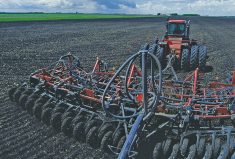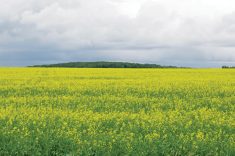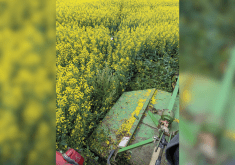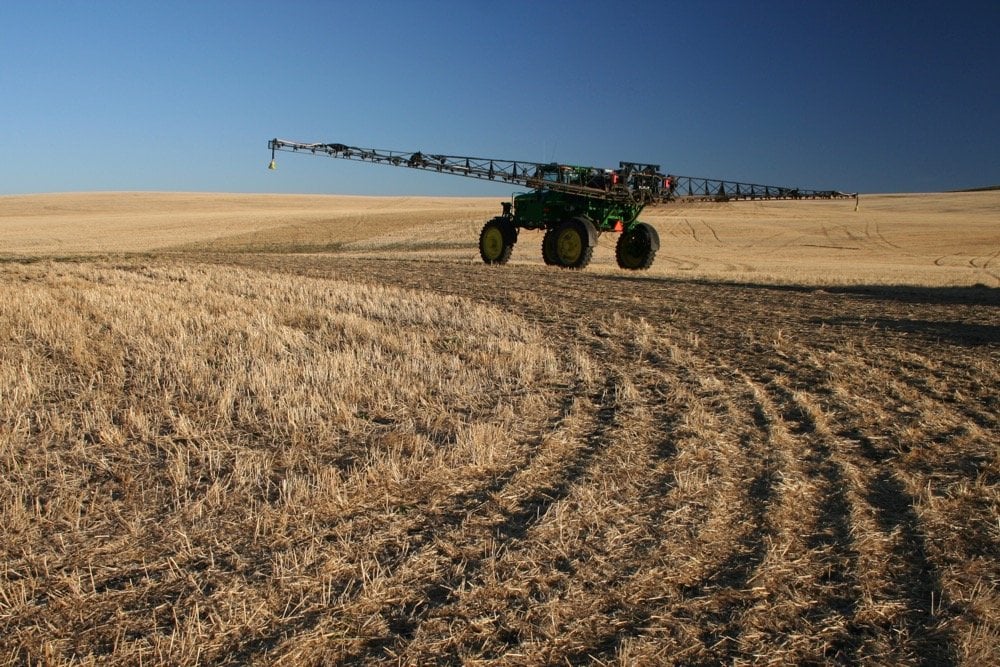This year’s crop quality and yields are better than expected, which comes as a major surprise to both farmers and agronomists across the province.

“Even as late as seeding was done, the yield seems to be average or better than expected, which is surprising, when some canola was planted on the 7th or 8th of June,” said Greg Sekulic, Canola Council of Canada agronomist specialist in the Peace region.
Quality across the province has been better than expected in wheat, mostly due to the hot summer.
“Provincially, about 90 per cent of the hard red spring wheat is coming in in the top two grades, which is really good, especially compared to last year, where some of the wheat was caught out in the field in October,” said Geoff Backman, business development and markets manager with Alberta Wheat.
There were some other anomalies as well. For example in the Peace, La Crete had temperatures comparable to Lethbridge.
“Given the heat that we had over the summer, there were some concerns that there would not be as large of yields, and mostly what we’re hearing from the majority of producers is that they are getting average to slightly above-average yields,” said Backman. “Given a year like this, it’s great.”
Wheat that went in early is coming off with a higher protein, and wheat that went in later is coming off with an average protein around 12 per cent. About 85 per cent of wheat has been harvested throughout the province by mid-October.
Quality has been good in the south and central regions and the south Peace, said provincial government crop specialist Neil Whatley.

“The quality was excellent in the south and central regions because we didn’t get a lot of rain in the summer in those areas,” he said. “The yield was fairly low, but that’s due to a lack of precipitation. The quality is higher when we go through a summer that doesn’t have much precipitation.”
The harvest story for the north includes both precipitation and frost. There was rain in September, and snow at the beginning of October which slowed the harvest. Crops are also late because of delayed seeding.
“They had to do some combining in the spring, so that set back some crops in the spring, but not all of them,” said Whatley. “That left them more vulnerable to fall frost and some wet conditions in the fall.”
Central Alberta producer Neil Gorda is one of the farmers having a tough year.

“Last year was tough, too,” said Gorda, who farms 1,800 acres with his son near Willingdon. “The County of Two Hills was in the worst shape of any county in the province. Lots of people left thousands of acres.”
Gorda had about 300 unharvested acres and didn’t start seeding until May 21 — which is usually when he finishes. So even though growing conditions were good thanks to timely rains this summer, harvest has been a slog and he’s been forced to take off crops with high moisture levels.
“In our area, a lot of people are taking it off and hoping they can move it to the elevator systems because they have the big dryers and stuff,” said Gorda, who is an Alberta Barley director. “But if that gets backed up, it’ll be tough. A lot of guys set up with dryers last fall and those guys are going because they can dry.”
Read Also

Scouting for disease in canola crops
Inspecting your canola fields for early signs of disease can save you plenty of headaches in the long run.
Farmers in Gorda’s area haven’t caught a break and he feels for them, said Backman.
“I don’t have any numbers out of there, but I suspect that that area would see some of the lowest grade on their wheat,” he said. “I’m also hearing similar things from farmers in that area that they just took their wheat off at about 18 to 19 per cent moisture because they needed to have it off.
“Hopefully they can dry it down on aeration, if we can get some drier days here.”
















